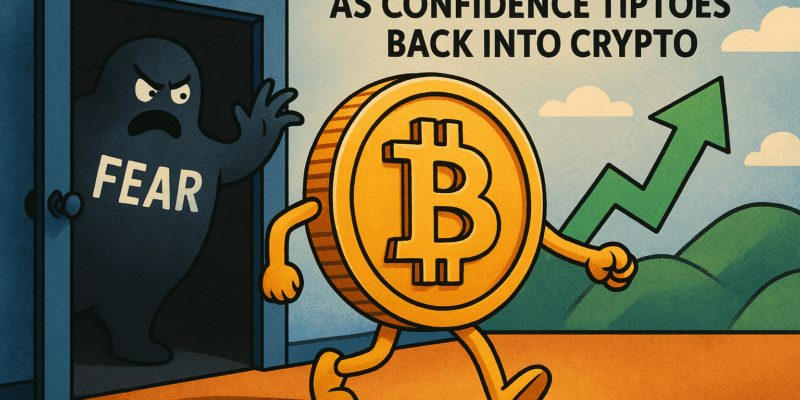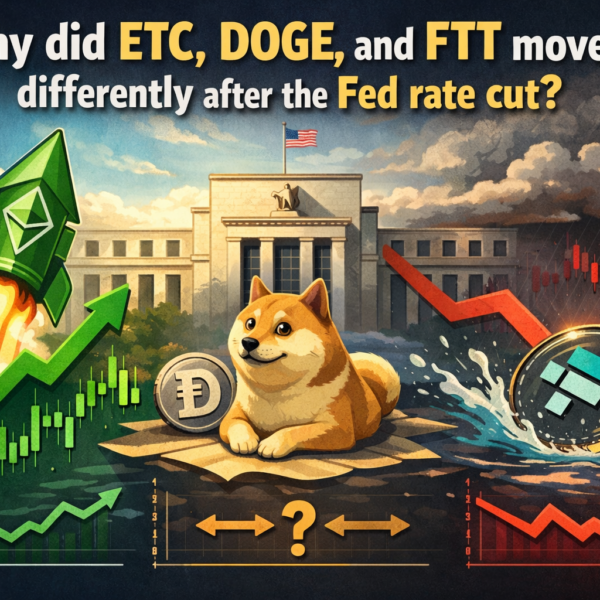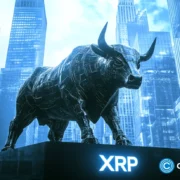Bitcoin Finally Escapes ‘Fear’ As Confidence Tiptoes Back into Crypto
The Crypto Fear and Greed Index has finally broken out of the prolonged ‘Fear’ zone, marking a critical psychological shift in the market and signaling a potential turning point for digital asset investors. This movement isn’t just about short-term relief from bearish trends — it may indicate the beginning of a more sustained recovery cycle. With Bitcoin now persistently trading above $60,000 and mainstream sentiment warming up, veteran market participants are interpreting this as an early signal for renewed growth rather than an isolated pump. More notably, this presents a rare window to strategize around asymmetric upside opportunities — the type of gains found not during hype, but in quiet accumulation phases.
In crypto markets, massive portfolios aren’t built at bull market peaks — they’re made in moments like this. During periods of low excitement and high uncertainty, sophisticated investors seek positioning that maximizes long-term reward relative to risk. While average market participants remain alert to short-term volatility, those who deploy capital during consolidation phases typically capture the most upside once the market resumes its upward trajectory. It is during this measured optimism — not wild euphoria — that we often see the sowing of the next cycle’s success stories.
Today’s macro landscape remains mixed, yet supportive. Global inflation concerns are easing, monetary policy is gradually stabilizing, and institutional interest in digital assets continues to quietly expand. Amidst these developments, major cryptocurrencies are beginning to stage potential trend reversals. And while Bitcoin continues to set the tone, savvy investors are tuning into a deeper narrative — one that extends beyond BTC and into a broad range of undervalued, high-utility assets that haven’t yet reclaimed their former highs.
Ethereum: The Sleeping Giant Awaits
While Bitcoin takes up most of the media spotlight, Ethereum (ETH) may be the most compelling value play in the current cycle. Ethereum’s fundamentals continue to strengthen with each upgrade, and the forthcoming Dencun upgrade — a milestone update designed to improve scalability and dramatically lower Layer 2 fees — represents a major leap forward for network usability. This technical advancement will further support decentralized applications, lower friction for developers, and expand the use case validity of the platform.
Despite these improvements, Ethereum’s price momentum has significantly lagged behind Bitcoin. Currently holding around the $3,200–$3,500 range, Ethereum remains well below its all-time high of over $4,800 from late 2021. For investors who favor a mix of strong fundamentals and discounted entry points, this convergence of factors could signal a timely opportunity to accumulate ETH before the rest of the market catches up. As institutional capital rotates beyond Bitcoin-focused products such as spot ETFs, Ethereum is logically next-in-line for capital inflows and product development.
Layer 2 Momentum: Arbitrum, Optimism, and Beyond
Under the radar, Ethereum’s Layer 2 ecosystem continues to expand rapidly. Projects like Arbitrum (ARB) and Optimism (OP) are no longer experimental — they are integral parts of Ethereum’s scaling roadmap. These networks facilitate faster and cheaper transactions while retaining Ethereum’s security guarantees. Both Arbitrum and Optimism have achieved significant milestones in terms of total value locked (TVL) and developer adoption, with DeFiLlama showing consistent growth in liquidity even during periods of flat price action.
Venture capitalists, DAOs, and protocol founders are increasingly allocating resources to these projects. The strategic inflows of capital and builder talent are clear indicators of long-term conviction. As smart money continues to build and deploy on Layer 2 platforms, token valuations could lag in the short term but eventually reflect the depth of economic activity occurring atop them. Early positioning in these foundational protocols may offer structurally advantaged exposure as Ethereum’s broader scaling architecture gains traction in 2024 and beyond.
New entrants like Base (developed by Coinbase), zkSync, and Starknet also deserve mention. These projects aim to further decentralize Ethereum’s ecosystem while radically improving transaction throughput. While token launches are yet to be seen for some of these networks, keeping close watch on ecosystem metrics, community growth, and relative adoption compared to earlier L2s can uncover new alpha-generating opportunities before they enter mainstream awareness.
The Contrarian Indicator: Bitcoin Dominance
Another underappreciated but critical metric is Bitcoin dominance, which currently hovers around the 52% mark. Historically, this level signals consolidation of capital in Bitcoin during uncertain phases of the market cycle. Past data indicates that dominance peaks just before altcoins begin massive rotation runs — meaning a drop in BTC dominance could precede one of the most explosive phases for Ethereum and other Layer 1 and Layer 2 assets.
Contrarian traders and long-term allocators closely observe Bitcoin dominance to help time their altcoin entries. As dominance begins to fade — even slightly — it may indicate capital rotation into smaller-cap assets where upside potential is higher. For the forward-thinking investor, this metric serves as a leading indicator to rethink portfolio allocation and pre-position accordingly. Reviewing dominance in tandem with on-chain metrics like active addresses, developer commits, and NFT volumes can produce a more complete picture of latent market strength across sectors.
Discipline Over Hype: Crafting Risk-Adjusted Exposure
Retail attention remains relatively muted, and that’s precisely what makes current market conditions so rich with opportunity. When headlines are quiet and TikTok influencers aren’t yapping about overnight 10x coins, serious investors focus instead on fundamentals, technology adoption, and risk-adjusted return profiles. This moment belongs to those deploying capital strategically before the masses recognize emerging trends.
With institutions continuing to explore crypto exposure — whether through traditional avenues like newly approved ETFs or via direct infrastructure investments — future demand is quietly building beneath the surface. This silent wave of capital accumulation rarely occurs in tandem with public euphoria. In fact, it often takes place in cycles where fear is dissipating, but retail enthusiasm has yet to re-enter the arena. Today fits that description precisely.
Rather than simply chasing momentum or succumbing to exit scams and meme-fueled narratives, the best strategy now may be seeking counter-cyclical entries. Look for assets that have strong fundamentals, vibrant communities, and real token utility but that still trade well below their all-time highs. Consider adding exposure through a diversified set of picks — across Blue Chips like ETH, infrastructure plays like L2s, and even select DeFi protocols — while using position sizing and risk management to protect capital during volatility.
The Next Phase Is Being Built Now
The recent positive shift in the Fear and Greed Index shouldn’t be viewed as an endpoint. Instead, it represents the beginning of a new market phase — one that rewards patience, discipline, and strategic capital rotation. The ‘quiet build’ phase is exactly when leaders of the next bull run are forged. Investors who take the time now to learn, allocate wisely, and maintain a long-term vision will likely be those celebrating in future market peaks.
This isn’t the end of a downturn — it’s the foundation of a new cycle forming. The crypto markets are rebuilding momentum, and long-term success will hinge on how well participants navigate this emerging stage. As risk appetite gradually returns and fundamentals reassert their influence over price action, those positioned early stand to capture the most upside. Stay focused, stay informed, and above all — stay early.














